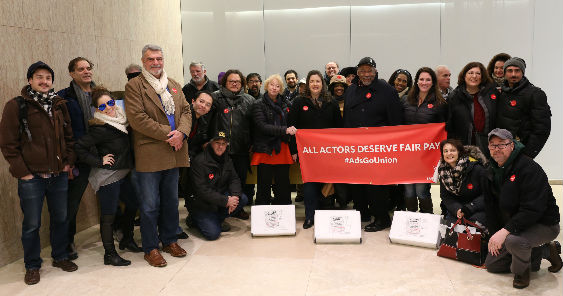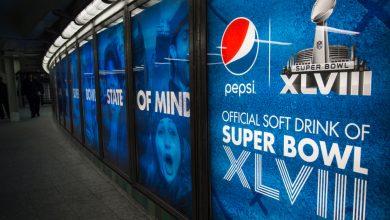NEW YORK – On Tuesday, members of SAG-AFTRA, or the Screen Actors Guild and the American Federation of Television and Radio Artists union were outside the office of global advertising agency Droga5. But this time, they weren’t there to star in a commercial. They were there to drop the 8,000-signature petition they are filing against the independent advertising network for alleged unfair pay.
“Instead of coming downstairs and looking us in the eye, Droga5 wouldn’t accept the petition and the police were called,” cried SAG-AFTRA’s New York local president Mike Hodge. But according to Marianne Stefanowicz, Global Head of PR of the agency, “no one from SAG contacted any individual from Droga5.” She added that it also wasn’t Droga5 who called the police but the building management when the group refused to leave the premises, which is a private property.

The union also ran digital shame campaigns all over advertising and marketing websites such as Adweek and Advertising Age against Droga5 and other agencies which are yet to be named. SAG-AFTRA also took the protest to social media through the hashtag #AdsGoUnion. Moving out of the digital screens, full-page color print ads are also expected to come out in industry publications in the coming days.

In an interview with adobo magazine, Droga5 released the following response, “Droga5 remains a non-signatory to the SAG commercials contract, enabling us to engage in non-union shoots when it is deemed appropriate. However, when managing SAG productions, we always use SAG performers, which include any commercials for SAG-signatory clients or featuring any SAG celebrity talent. In those instances, we abide by SAG rules and pay SAG wages across the board. We do not engage SAG performers in non-union productions. The claims they are making are unfounded in truth.” adobo magazine is still seeking SAG’s response to this.
SAG-AFTRA is a 160,000-member union composed of actors, announcers, broadcast journalists, dancers, djs, news writers, news directors, program hosts, puppeteers, recording artists, singers, stunt performers, voiceover artists and other media professionals. This issue goes as far back as The Great Depression in the 1930s when more and more workers turned to unions for support, thinking that the culprit behind the fall of the stock market are the big corporations, which prompted the creation of these two American labor unions.
More often than not, media professionals do not work for under one company alone. Actors, for example, jump from one project to the next. This means that no single entity like an employer is governing them to make sure that they are being paid right and on time, being asked to work for humane hours, or being given proper benefits. This is where unions come in. Under a union, there are set rules with regards to fees, working hours, health and pension benefits, and opportunities for their members, safeguarding these professionals’ working conditions.
Films, TV shows and now, advertising agencies are just some of the most prominent areas of work. They are sometimes the star acting in front of the camera or the members of the crew getting the production going behind.
Based on a report by MovieMaker magazine in 2015, agencies and production companies who turn to unions have bigger budgets. Non-union professionals tend to ask for less talent fees, and usually have more flexible working hours as opposed to a professional that is being regulated by a union. On the other end of the spectrum, some producers and filmmakers who work with union performers would also sometimes complain of unreasonable working arrangements and pay agreements, and would opt for the non-union.
The issue surrounding the working conditions of media professionals has been a long-standing problem that is often being brushed under the carpet. Now that the can of worms has been opened, we could only hope that this will result to an agreement that is beneficial for both parties.
PHOTO COURTESY: SAG-AFTRA










